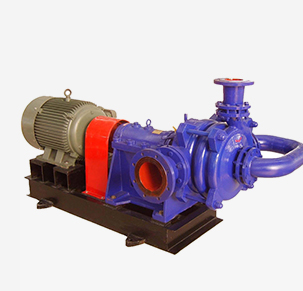Yoruba
- Afrikaans
- Albanian
- Amharic
- Arabic
- Armenian
- Azerbaijani
- Basque
- Belarusian
- Bengali
- Bosnian
- Bulgarian
- Catalan
- Cebuano
- Corsican
- Croatian
- Czech
- Danish
- Dutch
- English
- Esperanto
- Estonian
- Finnish
- French
- Frisian
- Galician
- Georgian
- German
- Greek
- Gujarati
- Haitian Creole
- hausa
- hawaiian
- Hebrew
- Hindi
- Miao
- Hungarian
- Icelandic
- igbo
- Indonesian
- irish
- Italian
- Japanese
- Javanese
- Kannada
- kazakh
- Khmer
- Rwandese
- Korean
- Kurdish
- Kyrgyz
- Lao
- Latin
- Latvian
- Lithuanian
- Luxembourgish
- Macedonian
- Malgashi
- Malay
- Malayalam
- Maltese
- Maori
- Marathi
- Mongolian
- Myanmar
- Nepali
- Norwegian
- Norwegian
- Occitan
- Pashto
- Persian
- Polish
- Portuguese
- Punjabi
- Romanian
- Russian
- Samoan
- Scottish Gaelic
- Serbian
- Sesotho
- Shona
- Sindhi
- Sinhala
- Slovak
- Slovenian
- Somali
- Spanish
- Sundanese
- Swahili
- Swedish
- Tagalog
- Tajik
- Tamil
- Tatar
- Telugu
- Thai
- Turkish
- Turkmen
- Ukrainian
- Urdu
- Uighur
- Uzbek
- Vietnamese
- Welsh
- Bantu
- Yiddish
- Yoruba
- Zulu
Telephone: +86 13120555503
Email: frank@cypump.com
Oct . 18, 2024 13:28 Back to list
Submersible Pumps for Efficient Wastewater Management and Sewer Systems Installation
Understanding Submersible Sewer Pumps A Comprehensive Guide
Submersible sewer pumps play a crucial role in modern wastewater management systems, ensuring the effective transport of sewage and wastewater from lower to higher elevation areas, especially in environments where gravity-driven systems may not suffice. These pumps are designed to operate underwater, hence the name submersible, and are commonly used in residential, commercial, and industrial settings.
What is a Submersible Sewer Pump?
A submersible sewer pump is a type of centrifugal pump that is placed below the surface of wastewater to remove it from a designated location, such as a basement, crawl space, or sewage sump. Unlike above-ground pumps, which rely on atmospheric pressure to draw water, submersible pumps are hermetically sealed and can handle both the pressure of the water above them and the harsh conditions present in sewage environments.
Key Features and Benefits
1. Efficiency Submersible sewer pumps are designed to be highly efficient. The pump motor operates underwater, which allows for quieter operation and helps to mitigate any noise pollution that may affect residential areas.
2. Robust Construction These pumps are made from durable materials, such as stainless steel or heavy-duty thermoplastics, to resist corrosion and damage from harsh wastewater conditions. This ensures longevity and reliability.
3. Built-in Safety Features Many modern submersible pumps come with built-in safety features, such as overheat protection and automatic shut-off mechanisms. These features help prevent pump failure and decrease maintenance costs.
4. Versatility Submersible pumps can handle various types of wastewater, including sewage, stormwater, and effluent. They are equipped with impellers that can manage solids and debris, making them suitable for diverse applications.
submersible sewer pump

5. Space-Saving Design Since submersible pumps are placed below the surface, they do not take up valuable above-ground space. This is particularly beneficial in areas where space is limited.
Applications of Submersible Sewer Pumps
Submersible sewer pumps find application in various settings, such as
- Residential Use Homeowners may install these pumps in basements that are prone to flooding or in sewage systems where gravity cannot move waste effectively. - Commercial Establishments Restaurants and industries that generate large volumes of wastewater often utilize submersible pumps to ensure efficient waste management. - Municipal Systems Cities and towns employ submersible sewer pumps in their wastewater treatment plants, lift stations, and other critical infrastructure to handle sewage more effectively.
Maintenance Tips
Proper maintenance of submersible sewer pumps is essential to ensure their longevity and optimal performance. Here are a few tips
1. Regular Inspection Check the pump for any signs of wear or damage, including the power cord and casing. 2. Clean the Screen Intake Ensure that the pump’s screen intake is not clogged with debris, as this can hinder performance. 3. Monitor Operation Listen for any unusual noises during operation, which may indicate a mechanical issue. 4. Follow Manufacturer Guidelines Always adhere to the maintenance schedules and recommendations provided by the manufacturer.
Conclusion
Submersible sewer pumps are a vital component of effective waste management systems. Their efficient design, robustness, and versatility make them suitable for a wide range of applications. Investing in a quality submersible sewer pump not only ensures the safe and efficient removal of wastewater but also contributes to the overall health and safety of the environment. As with any equipment, proper maintenance and care will maximize performance and extend the lifespan of the pump, providing peace of mind to homeowners and business operators alike.
-
Horizontal Split Case Pump with GPT-4 Turbo | High Efficiency
NewsAug.01,2025
-
ISG Series Pipeline Pump - Chi Yuan Pumps | High Efficiency, Durable Design
NewsAug.01,2025
-
Advanced Flue Gas Desulfurization Pump with GPT-4 Turbo | Durable & Efficient
NewsJul.31,2025
-
ISG Series Vertical Pipeline Pump - Chi Yuan Pumps | Advanced Hydraulic Design&Durable Construction
NewsJul.31,2025
-
ISG Series Vertical Pipeline Pump - Chi Yuan Pumps | Energy Efficient & Low Noise
NewsJul.31,2025
-
pipeline pump - Chi Yuan Pumps Co., LTD.|High Efficiency&Low Noise
NewsJul.31,2025










